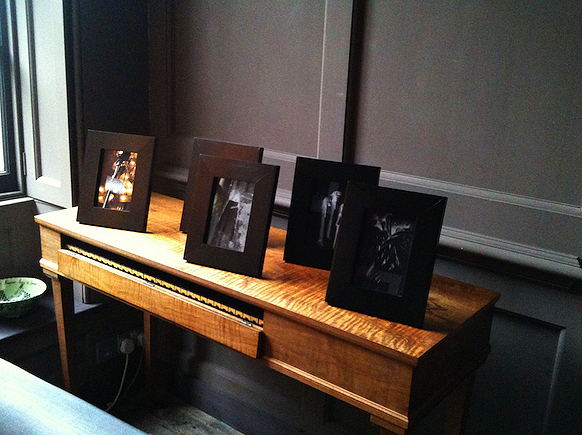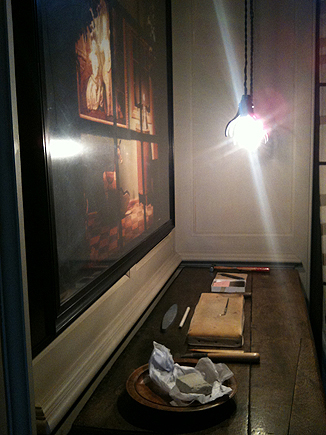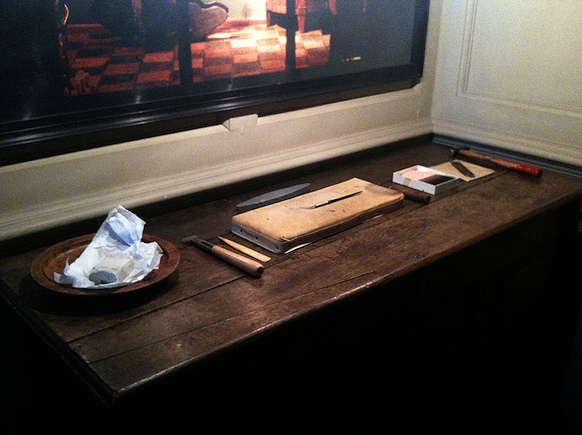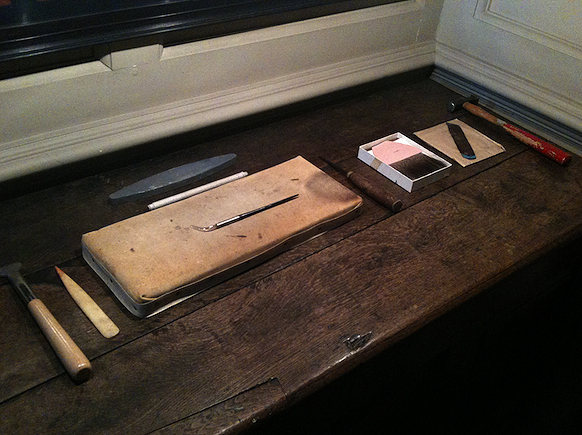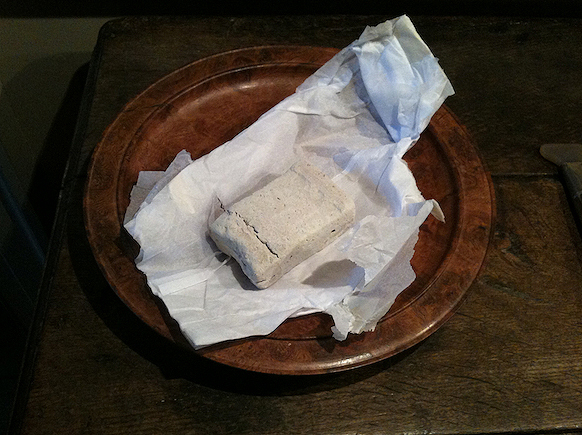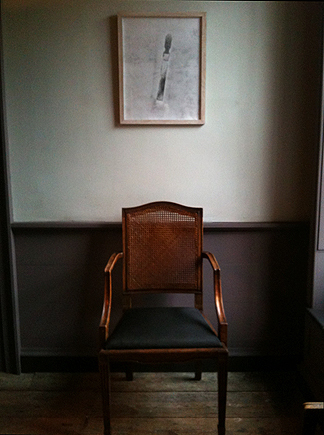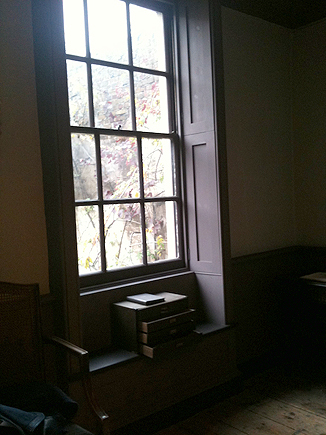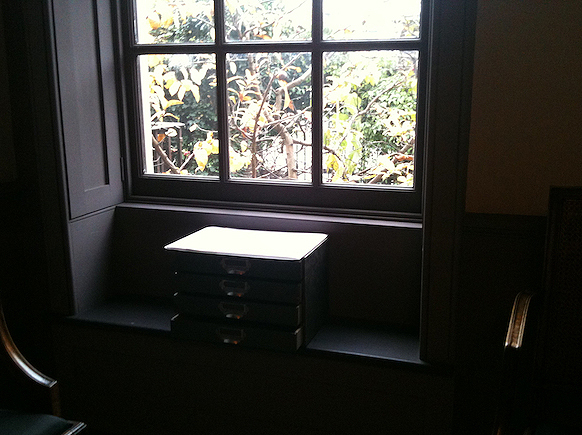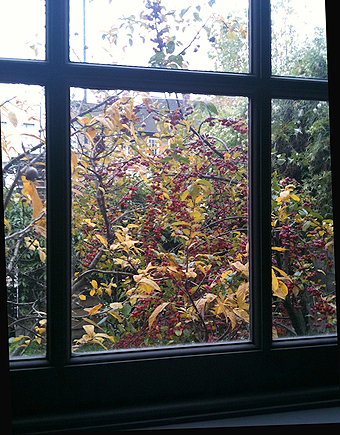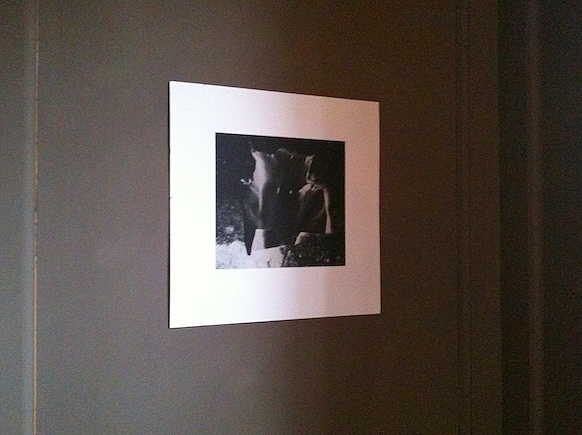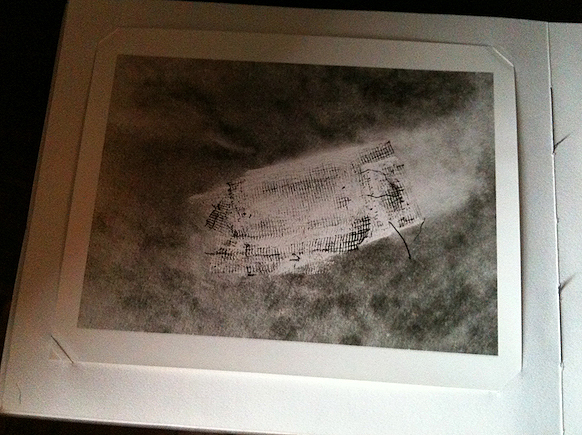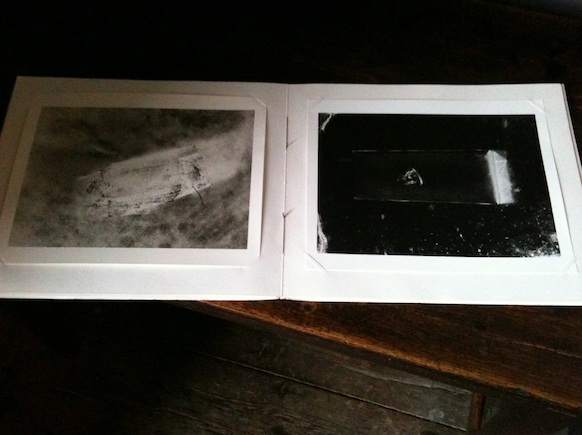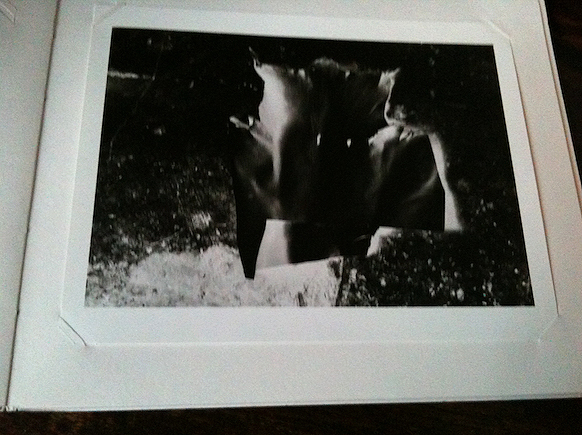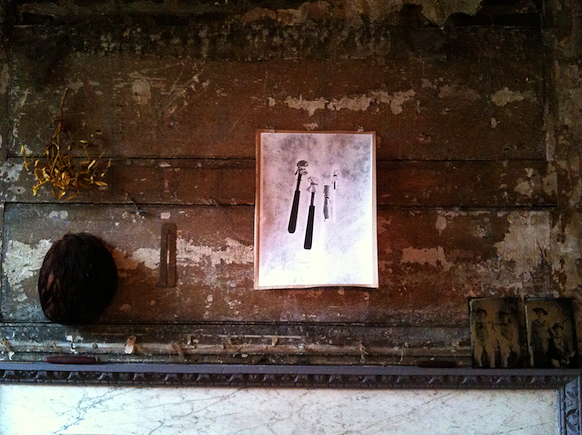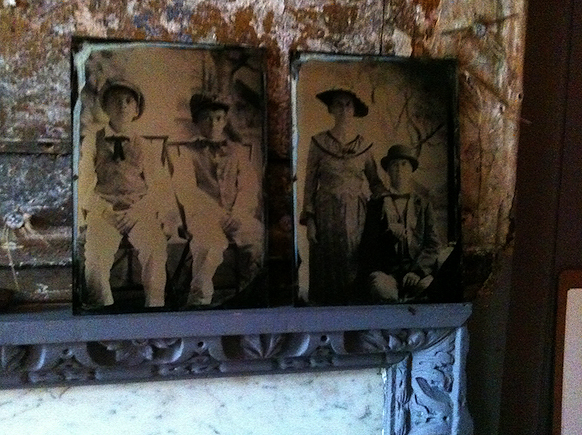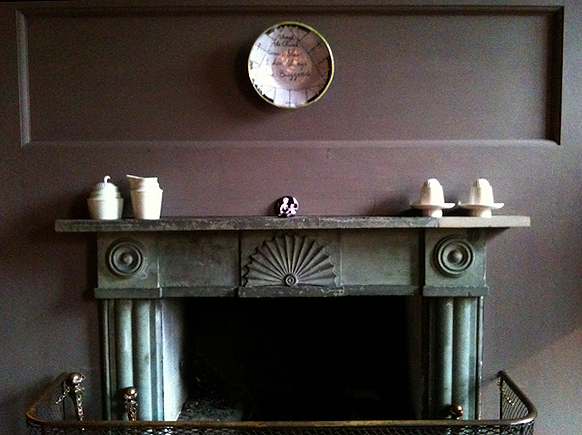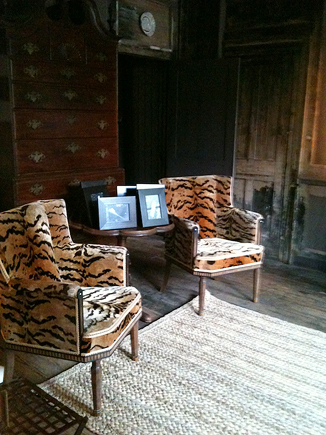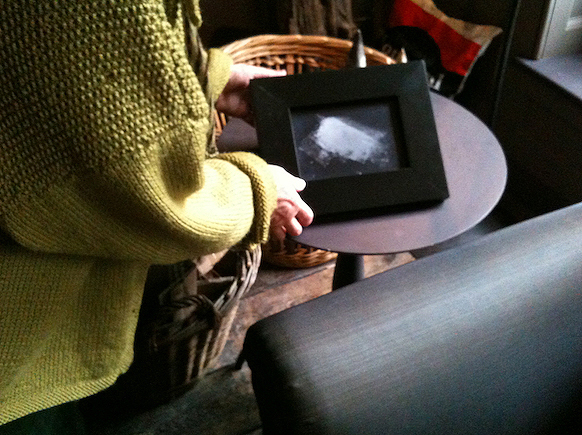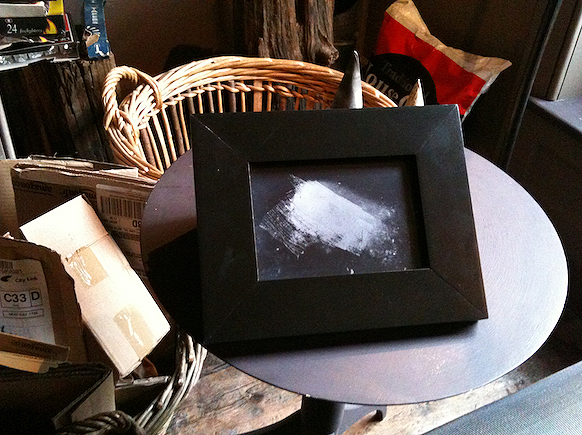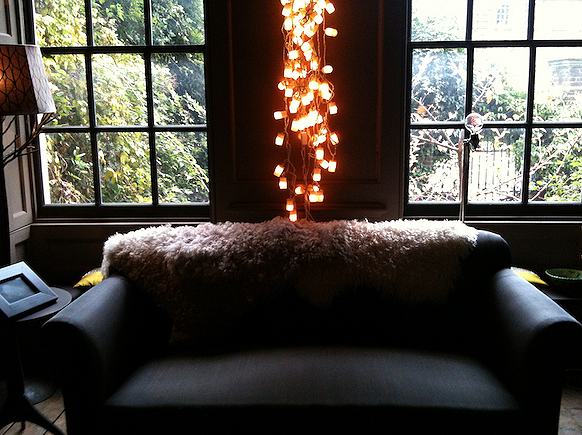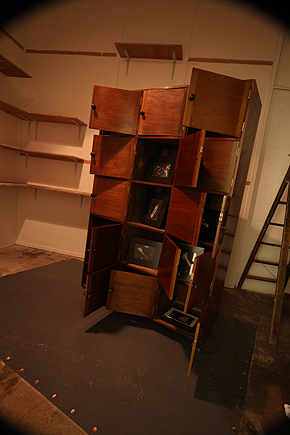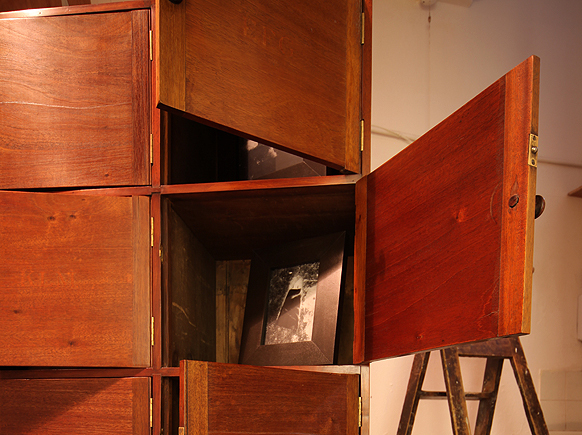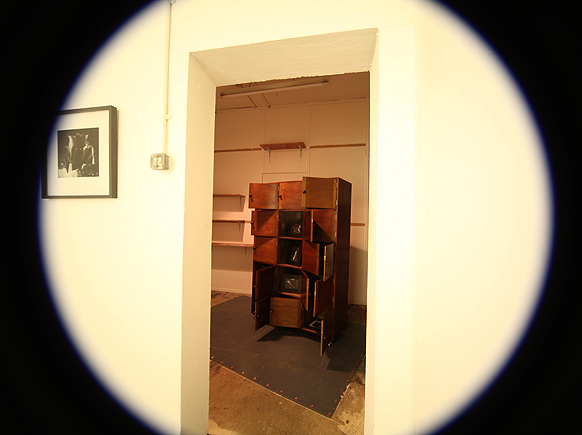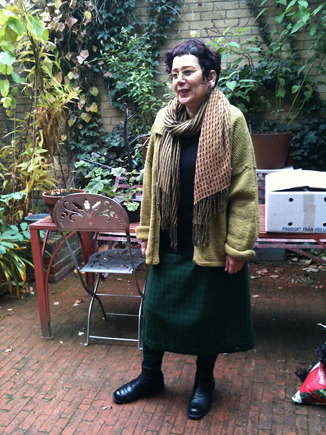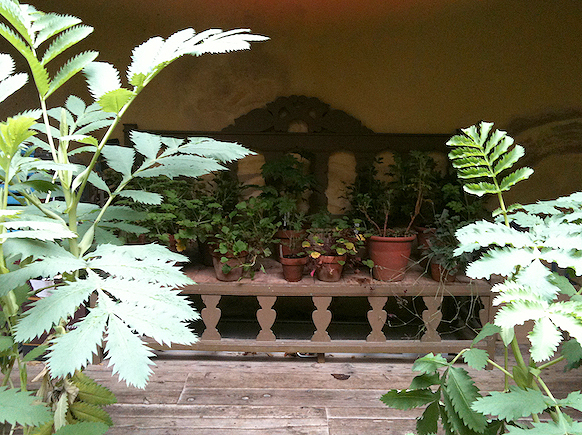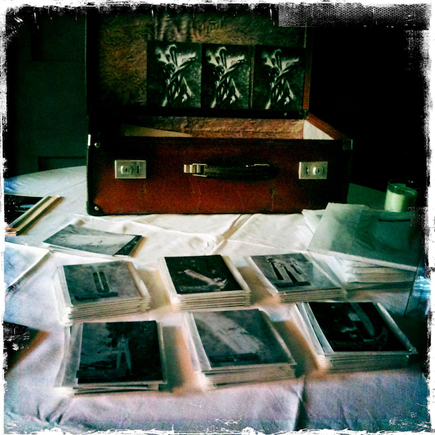Updating the past tense
One wonders if memory has a colour. When we consider our work, for instance, do we sometimes do so in monochrome? Or is the past just perhaps a slightly faded part of our spectrum? Held in an 18th century residence on the Mile End Road, the installation Romilly’s Tools suggests many questions of tone.
Romilly’s Tools is both an artist’s book and an exhibition of photographs. In both, elegant black-and-white shots depict the utensils employed by bookbinder Romilly Saumarez Smith in her craft – although Saumarez Smith is also a jeweller and creator of this home-turned-gallery. The photographs in question were made by Verdi Yahooda. They are published by Sian Bonnell’s imprint Trace Editions, with design by Nicola Barnacle and Daniel Edwards.
At the reception given to launch this installation, critic Mark Haworth-Booth identified the strange forms seen in these photos. “The bookbinder’s craft involves magical but practical items like Elk bone awls, band nippers, burnishers, clamps, steel micro chisels, dyes, paints, horsehair paste strainers, irons, and many kinds of knives.” They are tools that, in her work, Saumarez Smith has used for years. She was the first-ever female forwarder (binder in charge of turning sewn sheets into a book, with back and cover) at the famed Zaehnsdörf Bindery, not to mention its first female union member.
Yet it was because of her work’s excellence and personal flair that Saumarez Smith became a celebrated practitioner. With pieces widely exhibited throughout Europe and America, her whole career – including her jewellery and her house – was celebrated in summer 2010 at the Yale Center for British Art. Entitled Structured Elegance, this exposition displayed the books she bound along with the tools that she used to make them. Both were enhanced by photographs from Yahooda’s collection.
The pictures were taken during the late 1980s at Saumarez Smith’s first studio. There, inside a Georgian house near St. Anne’s in Limehouse, Yahooda photographed every tool – either laid against the leathers used in binding or on marble. “For most,” she says, “I used traditional negative-to-positive film. But also I had some slide film where the prints would come out as negatives.” A set of the works were shown at Leighton House. Others, however, Yahooda set aside for the future.
Born in Aden but resident in London, Yahooda trained at Goldsmiths and the Royal College of Art. For her, the resonance of the functional holds a special fascination and she likes to emphasise its auras of mystery and secrecy. She has presented photos encased in paper envelopes, photographed artefacts wrapped in cloth and hidden her prints in a ‘cabinet of curiosities’.
To help her plumb the reaches of longing and memory, Yahooda has used archive materials or constructed distance (one well-known series places the viewer outside Amsterdam shop windows). All of her pieces suggest multiple narratives, which any observer is free to interpret.
While Yahooda was busy exploring favourite themes with her photos, Saumarez Smith was making a mid-career change of métier. Having struggled to find the right leathers and vellum to meet her binding standards, she began spending more time with the metals she had used. Initially only for herself, she started making jewellery. “Right away I loved it! But I didn’t know if that feeling would last. So I took a year off binding just to see what might happen.”
This change of career was driven by intuition, but a parallel project was the new home her family acquired. They moved into a 1740 house that was huge and half-derelict, with Saumarez Smith taking on its two-year redesign. She found it a trying yet intensely creative experience. “I approached the whole thing as one coherent art piece. Every texture and every colour was about our family and our ways of seeing.” The result is a quietly graceful and comfortable environment, already the site of several installations.
Verdi Yahooda returned to her photographs separately, as part of 2009’s East London Photography Festival. “It was like I had discovered things owned by someone else. When I re-printed them, it was in a darker vein.” For the show, Yahooda used a cupboard in which the prints were half-hidden.
Then Yahooda’s work was requested for Structured Elegance. Formally back in touch, the artists created “Romilly’s Tools” – a book that serves as an aide-mémoire for its installation. Framed by an autumn garden visible through old windows and lit by a wavering light, Yahooda’s prints are even more mysterious. Their delicate gradations of charcoal and ivory combine with the muted shades around them to provide a gamut of sensations. It is partly these the printed volume preserves, along with the special nature of this collaboration.


